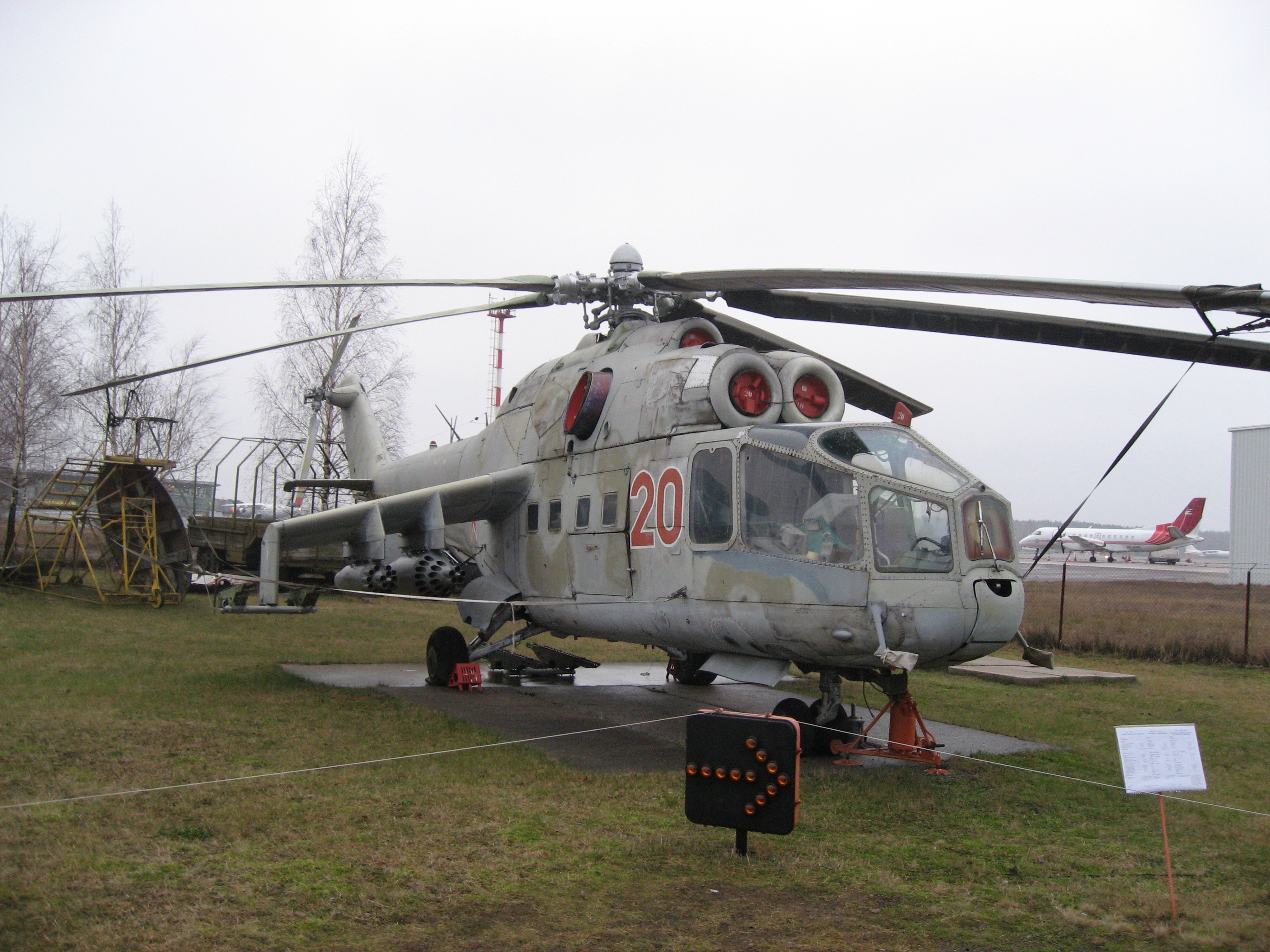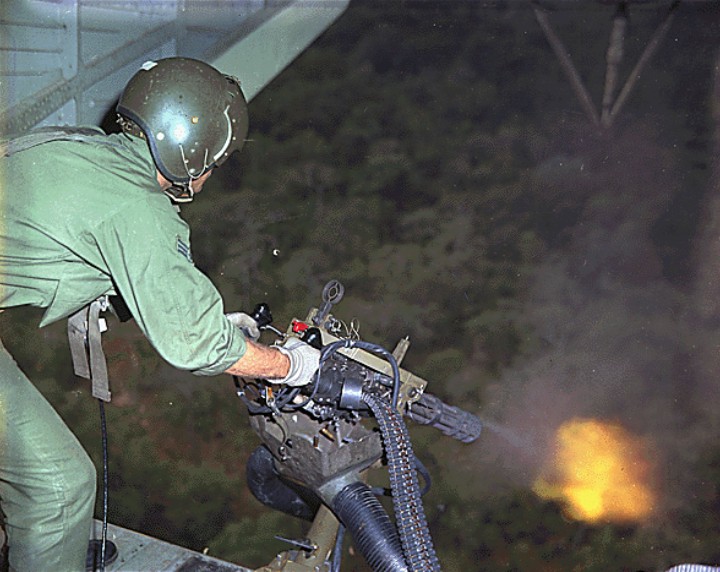|
GShG-7.62
The ''Glagolev-Shipunov-Gryazev'' GShG-7.62 (russian: Глаголев-Шипунов-Грязев ГШГ-7,62) is a four-barreled rotary machine gun designed in the Soviet Union, similar to firearms such as the M134 Minigun. It is a hybrid weapon using both propellant gas and an electric drive to rotate the barrels, which is in contrast with most other rotary guns (that are often exclusively powered via an electric drive). It was developed in 1968–1970 for the Mi-24 helicopter together with YakB 12.7mm machine gun, and is currently used in GUV-8700 gun pods, and flexible mounts on Kamov Ka-29. See also *Fokker-Leimberger * Hua Qing Minigun *XM214 Microgun *M197 Gatling gun *Komodo Armament Eli gun *Nordenfelt Gun *Gast Gun *Chain gun * Gatling gun, the 1860s firearm that originated the rotating-barrel concept *List of Russian weaponry The following is a list of modern Russian small arms and light weapons which were in service in 2016: Handguns Revolvers Pistols ... [...More Info...] [...Related Items...] OR: [Wikipedia] [Google] [Baidu] |
Rotary Cannon
A rotary cannon, rotary autocannon, rotary gun or Gatling cannon, is any large- caliber multiple-barreled automatic firearm that uses a Gatling-type rotating barrel assembly to deliver a sustained saturational direct fire at much greater rates of fire than single-barreled autocannons of the same caliber. The loading, firing and ejection functions are performed simultaneously in different barrels as the whole assembly rotates, and the rotation also permits the barrels some time to cool. The rotating barrels on nearly all modern Gatling-type guns are powered by an external force such as an electric motor, although internally powered gas-operated versions have also been developed. The cyclic multi-barrel design synchronizes the firing/reloading sequence. Each barrel fires a single cartridge when it reaches a certain position in the rotation, after which the spent casing is ejected at a different position and then a new round is loaded at another position. During the cycle, t ... [...More Info...] [...Related Items...] OR: [Wikipedia] [Google] [Baidu] |
Mil Mi-24
The Mil Mi-24 (russian: Миль Ми-24; NATO reporting name: Hind) is a large helicopter gunship, attack helicopter and low-capacity troop transport with room for eight passengers. It is produced by Mil Moscow Helicopter Plant and has been operated since 1972 by the Soviet Air Force and its successors, along with 48 other nations. In NATO circles, the export versions, Mi-25 and Mi-35, are denoted with a letter suffix as "Hind D" and "Hind E". Soviet pilots called the Mi-24 the "flying tank" (russian: летающий танк, letayushchiy tank, links=no), a term used historically with the famous World War II Soviet Il-2 ''Shturmovik'' armored ground attack aircraft. More common unofficial nicknames were "Galina" (or "Galya"), "Crocodile" (russian: Крокодил, Krokodil, links=no), due to the helicopter's camouflage scheme, and "Drinking Glass" (russian: Стакан, Stakan, links=no), because of the flat glass plates that surround earlier Mi-24 variants' cockpit ... [...More Info...] [...Related Items...] OR: [Wikipedia] [Google] [Baidu] |
KBP Instrument Design Bureau
JSC ''Konstruktorskoe Buro Priborostroeniya'' (KBP) (russian: АО «Конструкторское бюро приборостроения», AO konstruktórskoje bjuró priborostrojénija Joint-Stock Company - Instrument Design Bureau) is one of the main enterprises in the field of Russian defense industry, based in Tula. It is engaged in designing high-precision weapon systems for the Army, the VMF and the VKS, as well as anti-air defense systems, high-rate-of-fire cannons and small arms, in addition to civilian products. Its full name goes as "Joint-Stock Company Instrument Design Bureau named after Academic A. G. Shipunov". Its shareholders include High Precision Systems, part of the State Corporation Rostec. The designing of high-precision weaponry is the priority of the KBP. The enterprise designs air-to-ground, ground-to-air and ground-to-ground weaponry. In addition to these, KBP also develops modern autocannons and grenade launchers. It also manufactures automatic, h ... [...More Info...] [...Related Items...] OR: [Wikipedia] [Google] [Baidu] |
XM214 Microgun
The XM214 Microgun is an American prototype 5.56 mm rotary-barreled machine gun. It was designed and built by General Electric. The XM214 was a scaled-down smaller and lighter version of the M134 Minigun, firing M193 5.56×45mm ammunition. Development The XM214 was first developed for aircraft applications. Later General Electric developed it into a man-portable weapon system, known as the GE Six-Pak. The complete Six-Pak system weighed 85 pounds (38.5 kg) with 1,000 rounds of ammunition, comparable in weight to some heavy machine guns. The basic gun in the Six-Pak weighed 27 pounds, or 12.2 kg. The system could be carried by a team of two soldiers and mounted either to an M122 tripod or a vehicle's pintle mount. Length overall is 104.1 cm, gun only is 68.6 cm long. Width (including ammunition case) is 44.4 cm. Sighting was usually by optical telescope. The Six-Pak consisted of the XM214, the power module, and the ammunition module consisted of ... [...More Info...] [...Related Items...] OR: [Wikipedia] [Google] [Baidu] |
Kamov Ka-27
The Kamov Ka-27 (NATO reporting name 'Helix') is a military helicopter developed for the Soviet Navy, and currently in service in various countries including Russia, Ukraine, Vietnam, China, South Korea, and India. Variants include the Ka-29 assault transport, the Ka-28 downgraded export version, and the Ka-32 for civilian use. Design and development The helicopter was developed for ferrying and anti-submarine warfare. Design work began in 1969 and the first prototype flew in 1973. It was intended to replace the decade-old Kamov Ka-25, and had to have identical or inferior external dimensions compared to its predecessor. Like other Kamov military helicopters it has coaxial rotors, removing the need for a tail rotor. In total, five prototypes and pre-series helicopters were built. Series production started at Kumertau in July 1979, and the new helicopter officially entered service with the Soviet Navy in April 1981. The Ka-27 has a crew of three with a pilot and a navigator b ... [...More Info...] [...Related Items...] OR: [Wikipedia] [Google] [Baidu] |
Gun Pod
A gun pod is a detachable pod or pack containing machine guns, autocannons, revolver cannons, or rotary cannons and ancillaries, mounted externally on a vehicle such as a military aircraft which may or may not also have its own guns. Description A gun pod typically contains one or more guns, a supply of ammunition, and, if necessary, a power source. Electrically powered cannon, such as the M61 Vulcan, may be powered from the aircraft's electrical system or by a ram-air turbine. Gun pods increase a vehicle's firepower without occupying internal volume. When not required for a specific mission they can be omitted to save weight. On some vehicles they isolate delicate internal components such as radar from the weapon's recoil and gases, and for jet aircraft allow the weapons to be mounted away from the intakes of the engines, reducing problems of gun-gas ingestion, which may cause the engine to stall. When designed to be suspension-mounted on a hardpoint on a typical post-WW II ai ... [...More Info...] [...Related Items...] OR: [Wikipedia] [Google] [Baidu] |
Hua Qing Minigun
The Hua Qing minigun is a Chinese Gatling The Gatling gun is a rapid-firing multiple-barrel firearm invented in 1861 by Richard Jordan Gatling. It is an early machine gun and a forerunner of the modern electric motor-driven rotary cannon. The Gatling gun's operation centered on a cyc ...-type machine gun. The weapon is chambered in the 7.62×54mmR round and was introduced at the 2009 Anti Terrorist Trade Show at Beijing. See also * * * * * * * References 7.62×54mmR machine guns Medium machine guns Multi-barrel machine guns Machine guns of the People's Republic of China {{machinegun-stub ... [...More Info...] [...Related Items...] OR: [Wikipedia] [Google] [Baidu] |
Minigun
The M134 Minigun is an American 7.62×51mm NATO six-barrel rotary machine gun with a high rate of fire (2,000 to 6,000 rounds per minute). It features a Gatling-style rotating barrel assembly with an external power source, normally an electric motor. The "Mini" in the name is in comparison to larger-caliber designs that use a rotary barrel design, such as General Electric's earlier 20 mm M61 Vulcan, and "gun" for the use of rifle ammunition as opposed to autocannon shells. "Minigun" refers to a specific model of weapon that General Electric originally produced, but the term "minigun" has popularly come to refer to any externally powered rotary gun of rifle caliber. The term is sometimes used loosely to refer to guns of similar rates of fire and configuration, regardless of power source and caliber. The Minigun is used by several branches of the U.S. military. Versions are designated ''M134'' and ''XM196'' by the United States Army, and ''GAU-2/A'' and ''GAU-17/A'' by the ... [...More Info...] [...Related Items...] OR: [Wikipedia] [Google] [Baidu] |
Nordenfelt Gun
The Nordenfelt gun was a multiple-barrel organ gun that had a row of up to twelve barrels. It was fired by pulling a lever back and forth and ammunition was gravity fed through chutes for each barrel. It was produced in a number of different calibres from rifle up to 25 mm (1 inch). Larger calibres were also used, but for these calibres the design simply permitted rapid manual loading rather than true automatic fire. This article covers the anti-personnel rifle-calibre (typically 0.45 inch) gun. Development The weapon was designed by a Swedish engineer, Helge Palmcrantz. He created a mechanism to load and fire a multiple barreled gun by simply moving a single lever backwards and forwards. It was patented in 1873. Production of the weapon was funded by a Swedish steel producer and banker (later weapons maker) named Thorsten Nordenfelt, who was working in London. The name of the weapon was changed to the Nordenfelt gun. A plant producing the weapon was set up in Engla ... [...More Info...] [...Related Items...] OR: [Wikipedia] [Google] [Baidu] |
Aircraft Guns Of The Soviet Union
An aircraft is a vehicle that is able to fly by gaining support from the air. It counters the force of gravity by using either static lift or by using the dynamic lift of an airfoil, or in a few cases the downward thrust from jet engines. Common examples of aircraft include airplanes, helicopters, airships (including blimps), gliders, paramotors, and hot air balloons. The human activity that surrounds aircraft is called ''aviation''. The science of aviation, including designing and building aircraft, is called ''aeronautics.'' Crewed aircraft are flown by an onboard pilot, but unmanned aerial vehicles may be remotely controlled or self-controlled by onboard computers. Aircraft may be classified by different criteria, such as lift type, aircraft propulsion, usage and others. History Flying model craft and stories of manned flight go back many centuries; however, the first manned ascent — and safe descent — in modern times took place by larger hot-air b ... [...More Info...] [...Related Items...] OR: [Wikipedia] [Google] [Baidu] |
Machine Guns Of The Soviet Union
A machine is a physical system that uses power to apply forces and control movement to perform an action. The term is commonly applied to artificial devices, such as those employing engines or motors, but also to natural biological macromolecules, such as molecular machines. Machines can be driven by animals and people, by natural forces such as wind and water, and by chemical, thermal, or electrical power, and include a system of mechanisms that shape the actuator input to achieve a specific application of output forces and movement. They can also include computers and sensors that monitor performance and plan movement, often called mechanical systems. Renaissance natural philosophers identified six simple machines which were the elementary devices that put a load into motion, and calculated the ratio of output force to input force, known today as mechanical advantage. Modern machines are complex systems that consist of structural elements, mechanisms and control componen ... [...More Info...] [...Related Items...] OR: [Wikipedia] [Google] [Baidu] |
.jpg)




